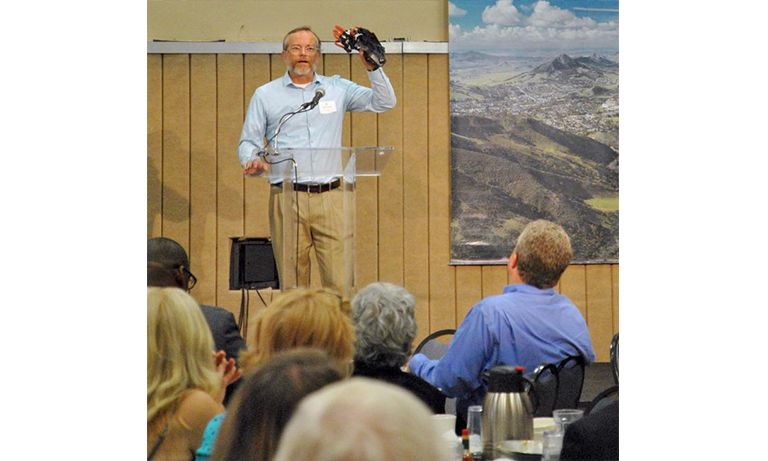When you pull a virtual reality headset over your eyes, you can find yourself immersed in a place that isn’t really there, Bob Crockett told a sold-out crowd at Good Morning SLO recently.
“The first time you don one of these headsets, it’s amazing,” said Crockett, who chairs the Biomedical Engineering Department.
But, he added, the novelty of being on a virtual Mars or in a virtual aquarium wears off unless you can also feel the experience.
The company he co-founded, however, is working to change that. HaptX, a San Luis Obispo tech startup, is making virtual reality more real by allowing users to “touch” what they see.
Their HaptX gloves, as explained in this story, interfaces with virtual reality and uses precise motion tracking, along with 100 points of input on the glove, to provide tactile feedback in conjunction with what is visually portrayed in a VR headset.
Billed by the company as the “world’s only haptic wearable,” a HaptX glove will allow you to do more than just see a virtual cup of coffee.
“It stops your hand from going through a coffee cup that isn’t there,” Crockett said. “So when you interact with things you see in this headset, it feels like you’re touching them.”

The HaptX glove, designed by a San Luis Obispo startup, allows virtual reality users to also experience a sense of touch.
The company’s origins date back to 2012, when CEO Jake Rubin took his idea to Crockett. While Rubin is in Seattle, where much of the early investment originated, the company ultimately kept operations in San Luis Obispo, where it now employs around 30 engineers, most from Cal Poly.
Aided by $9 million in investment money, the company has already generated a buzz, with recent stories in Forbes, PC Gamer and Wired. Meanwhile, HaptX just shifted from making prototypes to commercialization, and over 100 Fortune 500 companies have signed up for access, Crockett said.
“We’re directed squarely at the enterprise market – the companies that want to use this for training,” Crockett said, noting that local firefighters have participated in demonstrations for industrial training.
“And this is just the first step,” he said, holding up one of the gloves. “It goes from beyond just hands — to a whole body.”


